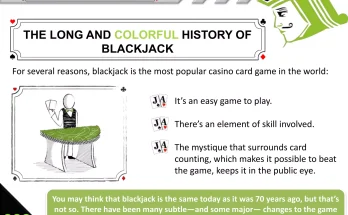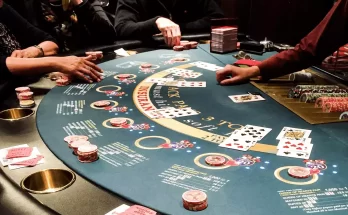You know the basics. Get to 21, or as close as you can without going over. Beat the dealer. It’s the universal language of the casino floor. But here’s the thing: travel the globe, and you’ll quickly discover that the game of blackjack isn’t a monolith. It’s more like a language with countless dialects.
From the sun-drenched casinos of the Mediterranean to the bustling halls of Macau, local cultures have put their own unique spin on this classic card game. The core remains, but the rules, the strategies, the very feel of the game—it all shifts. Let’s pull up a chair and explore the fascinating cultural variations of blackjack played around the world.
The European Touch: A Different Deal
If you’re used to the American way, stepping into a European casino can be a bit of a shock to the system. The most significant difference? The deal itself.
European Blackjack
This is the standard across most of the continent. The dealer receives only one card face up at the start of the round. The second card? It’s dealt after all players have completed their hands. This simple change has a huge impact. You can’t see the dealer’s potential blackjack coming, which completely alters the insurance bet—making it a much riskier proposition.
Other quirks? Well, you can only double down on hard hands of 9, 10, or 11. And splitting? Usually, you only get one shot at it. It’s a tighter, some would say purer, version of the game that demands a more conservative strategy.
Spanish 21: The Player-Friendly Anomaly
Now, if European Blackjack feels restrictive, Spanish 21 is its wild, fun-loving cousin. Honestly, this game is packed with player-friendly rules that seem almost too good to be true. The biggest twist? All the 10s are removed from the deck. Wait, that sounds terrible, right? A higher house edge?
Well, that’s the genius of it. To compensate, the game showers you with bonuses. You can double down on any number of cards. Late surrender? Always available. Players win automatically with a 21. There are even special bonus payouts for specific card combinations, like a 21 made of 7-7-7 or 6-7-8. It’s a chaotic, high-reward variant that feels like a party.
Asian Innovations: A Blend of Luck and Strategy
In Asia, blackjack adapts to local gambling preferences, which often favor games of chance and fortune over pure strategy. The atmosphere is different, the pace is different, and the games themselves are, you know, different.
Macau’s Unique Stance
As the gambling capital of the world, Macau is a universe of its own. The most common version you’ll find is a multi-deck shoe game that closely resembles European Blackjack. However, the casinos there have a peculiar rule to protect themselves from card counters: they often shuffle the deck before reaching the cut card. This unpredictable shuffle point throws a wrench in traditional counting systems.
Chinese Blackjack
This isn’t just a rule variation; it’s practically a different game. Also known as “Ban-luck,” it’s hugely popular in informal settings and underground gambling rings across Southeast Asia. The goal isn’t just to beat the dealer—it’s to have a higher hand than everyone at the table.
Key features? You can split any two cards, not just pairs. There are special winning hands, like a two-card 15 or 16, that pay bonuses. And the scoring? Aces can be 1 or 11, picture cards are worth 10, and other cards are face value. But a hand with three cards totaling 21 beats a two-card 21. The social, competitive dynamic is what truly defines it.
Down Under and South American Flavors
The cultural imprint on blackjack doesn’t stop in the Eastern hemisphere. It’s made its way to other continents with their own distinct flavors.
Australian Pontoon
Don’t be fooled by the name; this is blackjack, Aussie-style. It shares a lot of DNA with Spanish 21, but with its own set of quirky terminology and rules. The dealer’s cards are both dealt face down. A “pontoon” is what they call a two-card 21 (an ace and a ten-value card), and it pays 2 to 1.
You “buy” cards instead of hitting, and you can double on any number of cards—a massive advantage. A five-card hand that doesn’t bust is an automatic winner. It’s a fast, loose, and incredibly fun version of the game.
Brazilian “Vinte-e-um”
In Brazil, the game is literally called “Twenty-One.” While the rules in legal casinos often align with the European model, the spirit of the game is infused with the country’s love for social, high-energy gambling. The focus is on the communal experience, the thrill of the draw, and, of course, the pursuit of that magic number.
Why Do These Variations Matter?
Sure, it’s a fun trivia fact. But understanding these differences is crucial for any serious player. Your perfect strategy in Las Vegas will bleed money in London if you don’t account for the no-hole-card rule. The basic strategy chart you memorized is useless in a game of Spanish 21.
It’s a reminder that context is everything. The house edge shifts with every rule change. Knowing the local landscape isn’t just about being a tourist; it’s about being a savvy player. It’s the difference between playing the game and letting the game play you.
So the next time you sit down at a blackjack table, wherever you are in the world, take a moment. Look at the felt. Listen to the rhythm of the deal. You’re not just playing a card game; you’re engaging with a little piece of local culture, a tradition that has been reshaped and refined by the hands of countless players before you. And that, honestly, is a bet worth making.




